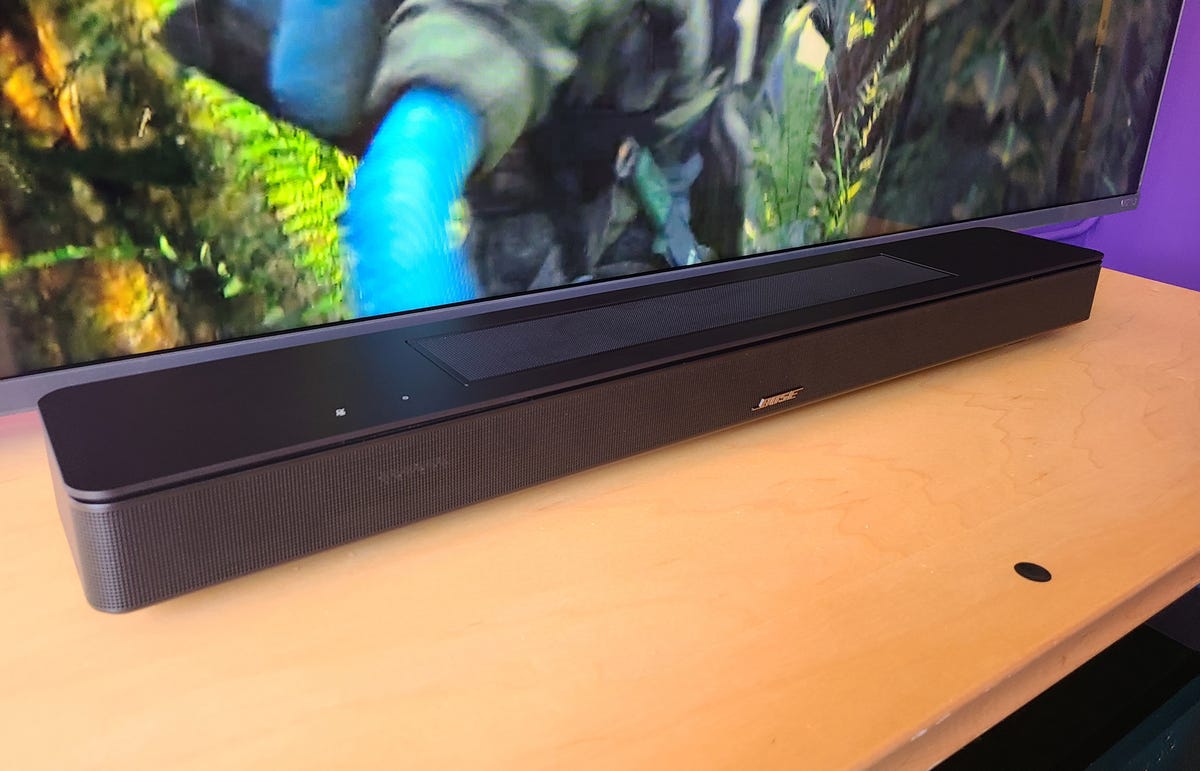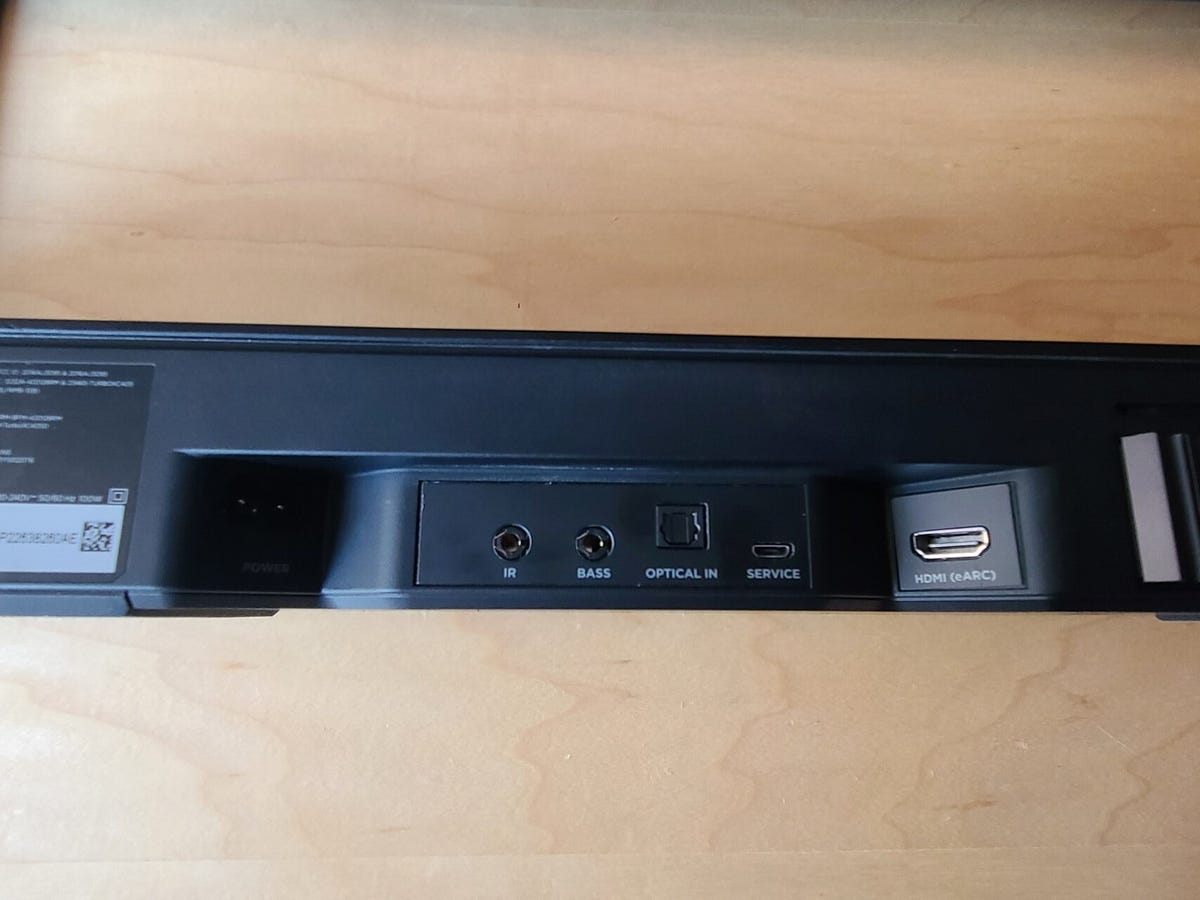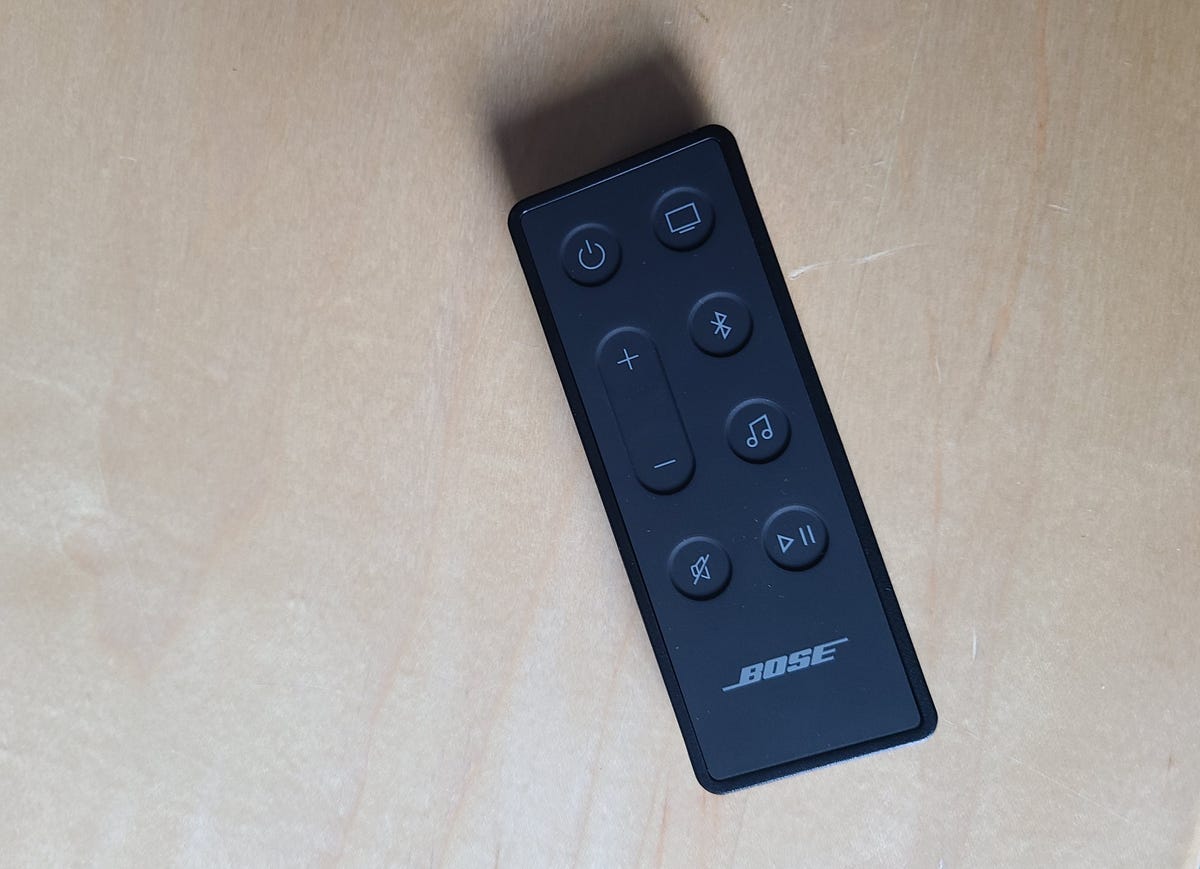If I was ever to define a “Mount Everest of soundbars” it would be one with great dialog, excellent streaming capabilities and fine music replay. The Sennheiser Ambeo Max is right there, but also comes with an insurmountable $2,500 price tag. What if you’re looking for something a little closer to Earth?
Enter the Bose Smart Soundbar 600. This TV speaker features all the things most people care most about — excellent sound quality, wide format support, even voice control — and it does so for a much more affordable price. It also offers HDMI connectivity and music streaming over Bluetooth and Wi-Fi.
It’s a close tussle, however, between the Bose 600 and the rival Sonos Beam, which offers a similar feature set for a similar price. In my book the Sonos squeaks ahead due to its established multiroom ecosystem, a choice of voice assistants and its ability to sound best without a sub. That said, if you’re looking for a soundbar with excellent speech clarity, “true” Dolby Atmos capability, and a clear upgrade path, the Bose Smart Soundbar 600 really is a one-stop-shop.
What is it?

Ty Pendlebury/CNET
The Bose Smart Soundbar 600 is a follow-up to last year’s Smart Soundbar 900, and while the new unit has made cuts to size and cost, it performs many of the same duties. That is, this is a Dolby Atmos soundbar with an onboard voice assistant (Amazon Alexa) and music streaming.
At its sub-$500 price, the Soundbar 600 is able to offer something we haven’t seen outside of Vizio’s range — dedicated Atmos height speakers. Competitors such as the Denon DHT-S217 and the Sonos Beam can decode Atmos but then use signal processing to simulate height.
The soundbar is medium-sized at 27 inches long and a TV IR-friendly 2.2 inches tall. The top of the unit is 4.1 inches deep and features a couple of controls for the assistant and a large grill that hides the Dolby speakers. In addition to these two upfiring transducers, the unit includes two angled fronts and a center tweeter for dialog. Like many soundbars at this price, the Bose bounces sound off walls and the ceiling to get a huge soundstage that isn’t usually possible with traditional loudspeakers.

Ty Pendlebury/CNET
The 600’s physical connectivity includes HDMI, optical, an IR trigger and a subwoofer out. The unit also boasts Bluetooth and Wi-Fi — the latter of which lets it offer Chromecast, Apple AirPlay 2, Spotify Connect and onboard Amazon Alexa built-in for voice control. Sadly there’s no Google Assistant option, unlike the Soundbar 900 or the Sonos Beam. You can also manipulate your music with the Bose Music app.
The Bose Music multiroom lineup isn’t as comprehensive as that of its rival Sonos, with only four soundbars and two smart speakers at the moment (plus peripherals like rears and subs). Sonos, on the other hand, has over a dozen products available, and even more if you count the ones going back to the mid-2000s. Interestingly, Bose offers an existing subwoofer upgrade at a similar $499 price to the new Sonos Sub Mini.
The soundbar also includes Bose SimpleSync to pair it with compatible Bose headphones and Bluetooth speakers.

Ty Pendlebury/CNET
Lastly, the 600 comes with a simple, premium-feeling remote with some straightforward controls, though most people will turf it to use their own TV or cable remote.
How does it sound?
Last year I tested Bose’s competitor to the Sonos Arc, the Bose Smart Soundbar 900, and found it to be a compelling alternative. It’s no surprise to me to find that the step-down Soundbar 600 does the same do-si-do with the Sonos Beam Gen 2. But how much of a difference do the Bose’s dedicated height speakers make?
I started with the Thanator Attacks scene from Avatar (at 26:54), using the eARC output of a Vizio TV. I found that the Bose struggled a little with the dynamics of this scene, but on the upside it managed a glorious sense of the jungle floor with insects buzzing around my listening room. The Bose swapped boom and bang for a wide image and crisp dialog, so this could be a good contender for improving dialog on your TV.
When I replaced the Bose with the Sonos Beam Gen 2, I found the Sonos to be a better performer from a home theater perspective. For instance, in Avatar when Jake touches the shell trees, they make a procession of deep thunk sounds, like something out of a Blue Man Group skit. The soundbar gave a more satisfying wallop with the trees and the feet of the hammerhead titanotheres as they stomp around the forest. In this scene, the surround soundtrack at times seemed to come from behind on the Sonos, whereas the Bose was only wide.
When it came to height effects, though, the Bose had the edge, and this was particularly clear during the opening of Mad Max: Fury Road. I found that compared to the Sonos, the Bose offered better steering of the Atmos-enriched voices that open the movie, and dialog was generally a little clearer. In addition I found that by boosting the Bose’s bass control I was able to gain back some (though not all) of the dynamics that had been missing previously.
With music I found that both were pleasant performers, especially with the folk of Field of Flowers by Grand Salvo. The song is quite dynamic and the Sonos was better able to reveal that, but on the flip side the Bose captured Paddy Mann’s emotive voice with even greater clarity. Both approaches worked well, though rock fans will more likely like the Sonos for songs with even more punch.
Returning briefly to Avatar, I wanted to see how the addition of a sub — in this case the Bose Bass Module $499 — would help the Soundbar 600. I had been disappointed by the Sonos Beam’s blend with the equivalent Sub Mini, and found it was still wanting on this scene, especially in comparison to the Bass Module. The Bose sub offered deeper, more resonant bass in this scene, and was more articulate with it.
With music — I tried some rock this time (Shellac’s Didn’t We Deserve a Look at You the Way You Really Are) — I found that the sub transforms the soundbar into a music dynamo. The Bose combo offered better dynamics and better presence with Steve Albini’s vocals, plus a bit more cymbals. The Sonos was also strong, but Albini’s vocal delivery came across as spookier, and less finely imaged.
Should you buy it?
Ever since Sonos began, competitors have tried to fashion their own versions of the company’s speakers. Yes, the Bose Smart Soundbar 600 is eerily similar to the Sonos Beam in size, price and capability. Yet it’s still able to offer a different spin with a better upgrade path and a more dialog-centric approach.
If you’re buying this soundbar it’s entirely possible that you won’t use the multiroom music features, or even set up the Amazon voice assistant. That’s OK, because these are secondary considerations compared to its strengths — vocal clarity and an enveloping soundstage. If you’re a music streamer or a Hollywood blockbuster fan, the Beam is still marginally better, but if you simply want to make your TV, movies and music clearer, the Bose 600 is a supremely confident soundbar.



